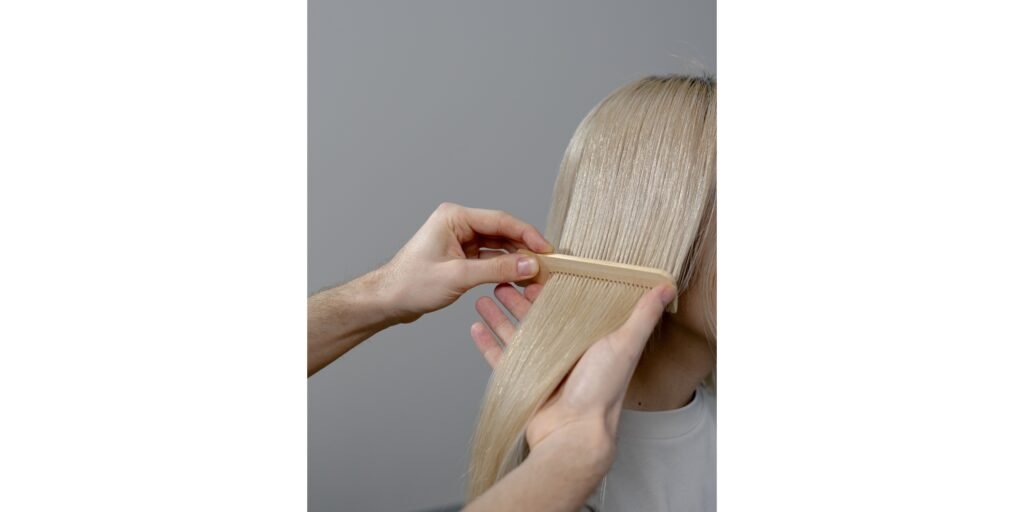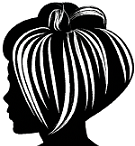How to make bleached hair soft and silky. If you have bleached your hair, you may be experiencing some dryness and brittleness. Bleaching can strip the hair of its natural oils and leave it feeling rough to the touch. However, with a few simple steps, you can restore your hair’s softness and silkiness.
In this article, we will explore some tips and tricks for making bleached hair soft and silky. Whether you have recently bleached your hair or have struggled with its texture for a while, these techniques can help you achieve the soft and silky hair you desire.
What is bleach-damaged hair?
Bleach-damaged hair is hair that has been chemically lightened or bleached, causing damage to the cuticle and making the hair brittle, dry, and prone to breakage. Bleaching hair involves removing the hair’s natural pigment, which can cause significant damage and loss of strength.
Hair that has been bleached may appear frizzy, rough, and difficult to manage. It is critical to care for bleached hair properly, which includes using nourishing hair products, limiting heat styling, and avoiding further chemical treatments.
How does damaged hair look?

Depending on the extent and type of damage, damaged hair can take on a variety of appearances. The following are some common signs of damaged hair:
Split ends occur when the hair shaft becomes brittle and splits at the end, which is frequently caused by heat styling, chemical treatments, or mechanical stress.
Dryness: Hair that appears dull, rough, or brittle may indicate damage. When hair is damaged, it can lose its natural oils, causing it to become dry and brittle.
Frizz occurs when the cuticle of the hair is raised, allowing moisture to enter and swell the hair shaft. Because of its porous nature, damaged hair is more prone to frizz.
Hair that snaps or breaks off easily can be a sign of damage. This Over-processing, heat styling or mechanical stress can all cause this.
Inadequate elasticity: Healthy hair has some natural elasticity, which allows it to stretch without breaking. Damaged hair may lose its elasticity, causing it to become brittle and prone to breakage.
Maybe you interested in: How to get Vaseline out of your hair
How to make bleached hair soft and silky?
Bleaching can cause dry, damaged hair, but there are several steps you can take to restore softness and silkiness:
Deep Conditioning: Use a deep conditioning treatment at least once a week to add moisture and nourishment to your hair. Look for ingredients like keratin, argan oil, and shea butter in your products.
Apply a Leave-In Conditioner: After washing your hair, use a leave-in conditioner to seal in moisture and protect it from further damage. Select a lightweight, nourishing formula that will not weigh down your hair.
Apply heat styling tools if necessary.
Apply a heat protectant spray or serum to your hair first.
Washing your hair too frequently can strip it of natural oils, making it even drier. Limit your washing to every other day or less, and use a gentle shampoo that won’t strip your hair of moisture.
Trim your hair on a regular basis: Because split ends and breakage are typical in bleached hair, it’s critical to get regular trims to keep your hair healthy and prevent further damage. Aim for a haircut every 6-8 weeks.
Protect Your Hair: Wear a hat or use a protective hair spray when spending time in the sun, chlorine, or salt water. This can help prevent further damage while also keeping your hair soft and silky.
some additional tips for softening and silkening bleached hair:
Use a hair mask: Once a week, apply a deep-conditioning hair mask to help repair and nourish your hair. Look for a mask designed specifically for bleached hair to help restore moisture and elasticity.
Apply a leave-in conditioner after shampooing and conditioning to help detangle and protect your hair from further damage. Look for a leave-in conditioner formulated for bleached hair that contains ingredients such as keratin or coconut oil to help strengthen and hydrate your hair.
Heat styling tools such as blow dryers, straighteners, and curling irons can further damage bleached hair. Instead, air-dry your hair and use heatless styling techniques such as braids or twists to add texture and waves.
UV rays can be harmful to bleached hair and cause further damage, so protect it from the sun. When spending time in the sun, wear a hat or use a UV-protectant hair spray or serum to help protect your hair.
Trim your hair on a regular basis to remove split ends and prevent further damage to your hair. To keep your hair healthy and strong, aim to trim it every 6-8 weeks.
When it comes to repairing damaged hair, remember that patience is essential. Improvements in the texture and health of your bleached hair may take time and consistent care.
You should read about: How long does it take for hair to dry
Watch what you eat to make bleached hair soft and a silky
diet can affect the health and appearance of your hair, even if it is bleached. Here are some dietary recommendations to make bleached hair soft and silky:
Consume protein-rich foods: Because hair is primarily composed of a protein known as keratin, eating protein-rich foods like eggs, chicken, fish, and beans can help strengthen and nourish your hair.
Incorporate healthy fats: Nuts, seeds, avocados, and fatty fish contain healthy fats that can help improve the texture and shine of your hair.
Consume vitamin and mineral-rich foods: Vitamins and minerals like biotin, vitamin C, and iron are essential for healthy hair growth and can be found in foods like leafy greens, citrus fruits, nuts, and whole grains.
Drink plenty of water: Dehydration can cause hair to become dry and brittle, so drink plenty of water.
By combining these dietary tips with the previously mentioned hair care tips, you can help make your bleached hair soft and silky.
Finally, by using the aforementioned tips and tricks, you can successfully restore the softness and silkiness of your bleached hair. It is critical to remember that damaged hair necessitates extra care and attention, but with the right approach, you can achieve healthy and beautiful-looking hair. Remember to nourish your hair from the inside out by eating a healthy, balanced diet and using high-quality hair care products that are tailored to your specific requirements.
FAQs
It’s recommended to limit washing your bleached hair to two or three times a week, as frequent washing can strip the hair of its natural oils and cause dryness. When you do wash your hair, use a gentle, sulfate-free shampoo and conditioner that are specifically formulated for color-treated or bleached hair.
Yes, hair masks can be very effective in hydrating and nourishing bleached hair, helping to restore its softness and silkiness. Look for a mask that contains ingredients like argan oil, shea butter, or coconut oil, which are known for their moisturizing properties.
Heat styling tools like flat irons and curling wands can cause further damage to already-bleached hair, so it’s best to limit their use as much as possible. If you do need to use them, be sure to apply a heat protectant spray or serum first, and use the lowest heat setting possible.
There are several natural remedies that can help to soften and nourish bleached hair, such as avocado, honey, and coconut oil. These ingredients can be combined to make a DIY hair mask, which can be applied to the hair for 30-60 minutes before washing out.
Regular haircuts are important for maintaining healthy hair, regardless of whether it’s been bleached or not. Trimming your hair every 6-8 weeks can help to prevent split ends and breakage, which can contribute to dryness and frizz. Additionally, a professional hair stylist can help to recommend products and treatments that are specifically suited to your hair type and texture.

